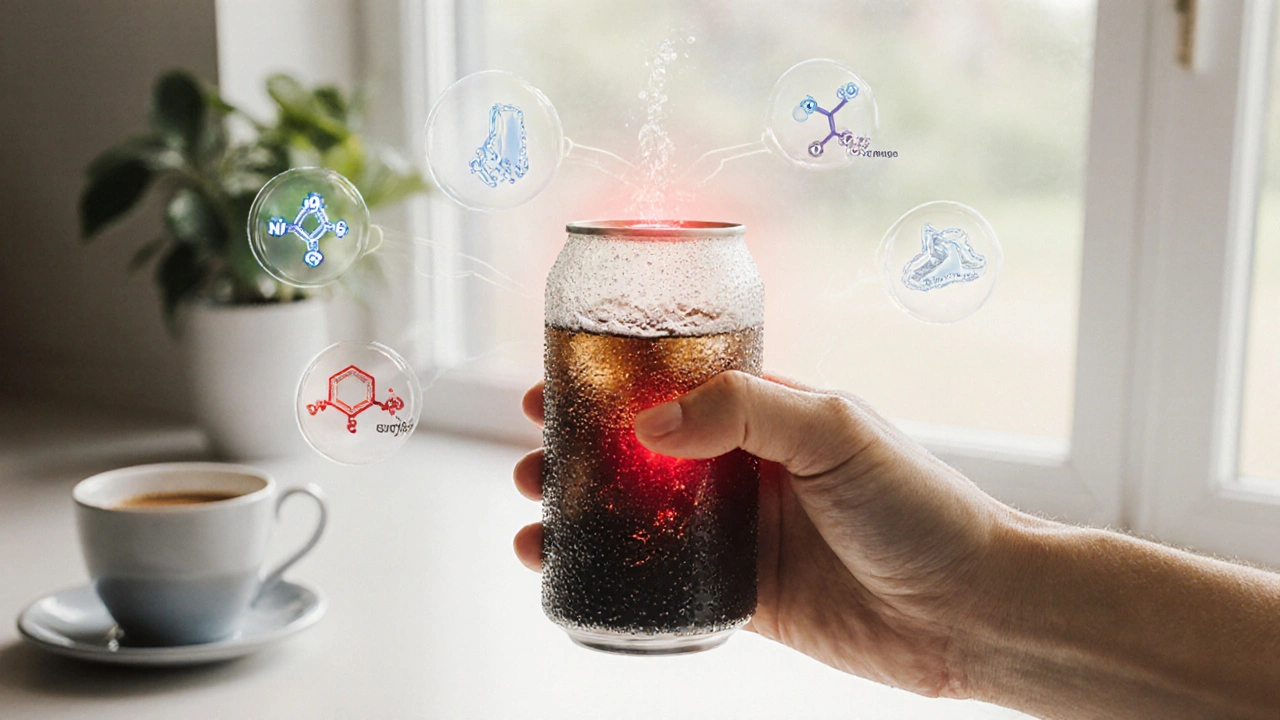Sweetener Side Effects – Understanding the Risks and Realities
When dealing with sweetener side effects, the unwanted reactions that can follow the use of sugar substitutes. Also known as artificial sweetener reactions, they range from mild stomach upset to more complex metabolic concerns. Knowing the landscape helps you choose wisely and avoid unpleasant surprises.
One major player in this space is artificial sweeteners, synthetic compounds like sucralose, aspartame, and saccharin used to sweeten foods without adding calories. These compounds often promise weight control, but they also bring metabolic effects that can interfere with insulin response. Another key group is sugar alcohols, low‑calorie sweeteners such as erythritol and xylitol that can cause bloating and gas when consumed in excess. Both categories interact with your gut microbiome, the community of bacteria that plays a crucial role in digestion and immune health.
How Different Sweeteners Impact Your Body
The gut microbiome influences how you tolerate sweeteners, and in turn, sweeteners shape microbial composition. For instance, studies show that high‑intake sucralose can reduce beneficial bacteria, leading to digestive disturbances. Meanwhile, stevia—a natural plant‑derived sweetener—often shows fewer gut issues, but it isn’t completely free of side effects; some people report a bitter aftertaste and occasional nausea.
Beyond digestion, sweetener side effects can extend to blood sugar regulation. Artificial sweeteners may trigger a false insulin release, a phenomenon known as the “sweet taste‑insulin response.” This can cause a temporary dip in blood glucose, leaving you feeling shaky or hungry. Sugar alcohols, on the other hand, have a lower impact on blood sugar but can create osmotic diarrhea when large amounts overwhelm the small intestine.
Patients with specific conditions need extra caution. Those with phenylketonuria must avoid aspartame because it contains phenylalanine. Individuals prone to migraines often report that certain sweeteners, especially aspartame, can trigger attacks. Understanding these personalized triggers helps you tailor your sweetener choices and avoid preventable discomfort.
From a practical standpoint, monitoring your intake is essential. Start by noting any stomach rumblings, headaches, or mood changes after you consume diet sodas, sugar‑free gums, or low‑calorie desserts. If you spot a pattern, try swapping the suspect sweetener for a different type—perhaps moving from sucralose to monk fruit. Keeping a simple food diary can reveal which sweetener is the culprit.
Regulatory bodies like the FDA and EFSA evaluate sweeteners for safety, but the real‑world impact can vary based on dosage, frequency, and individual gut health. While approved sweeteners are generally considered safe up to defined daily intake limits, many users exceed these limits unknowingly through processed foods and drinks.
In summary, sweetener side effects cover a spectrum of digestive, metabolic, and neurological reactions. Artificial sweeteners, sugar alcohols, and natural alternatives each have distinct risk profiles, and the gut microbiome plays a pivotal role in moderating those effects. By recognizing the signs and choosing alternatives mindfully, you can keep your diet sweet without sacrificing comfort.
Below you’ll find a curated collection of articles that dive deeper into each sweetener’s profile, share real‑world tips for managing side effects, and offer evidence‑based guidance on safer consumption. Explore the posts to get the full picture and take control of your sweetener choices.

Learn how artificial sweeteners may trigger acid indigestion, which sweeteners are risky, and practical tips to manage heartburn while still enjoying low‑calorie sweetness.
Chris Gore Oct 5, 2025




